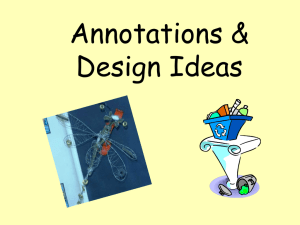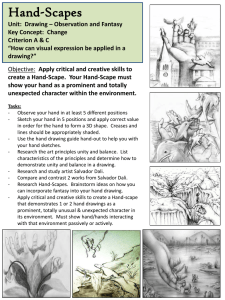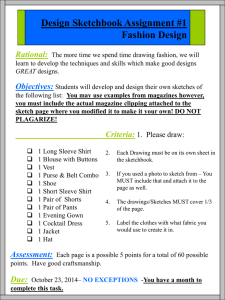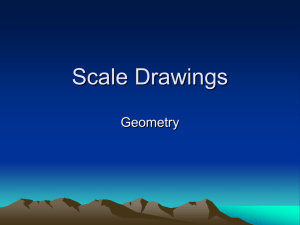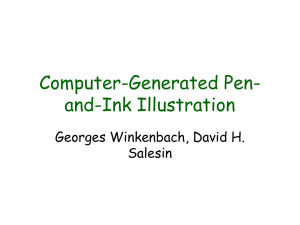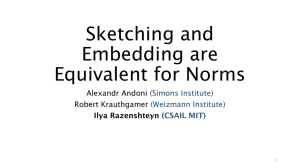File
advertisement
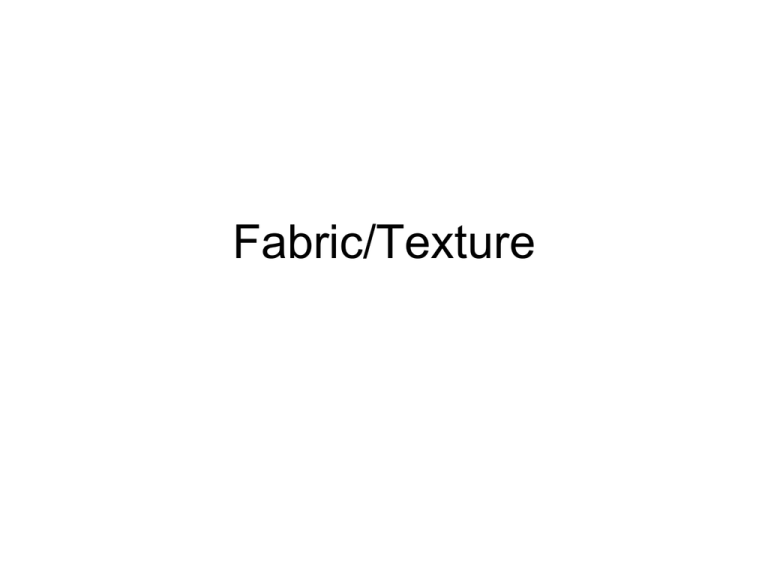
Fabric/Texture • What makes a good drawing? • • • • • • Good composition Interesting point of view Light and Shadow/ good contrast Accurate drawing/ good proportion Good amount of detail Meaning Thumbnail Sketches • Make at least 4 thumbnail sketches from each still-life set up A thumbnail sketch is an important step in preparing for a drawing and painting; think of it as a mental warm up. It is amazing how this little exercise can save you time and effort, as well as help you strengthen your work's design and composition. Without much emphasis on details, this is like a shorthand note of the image you are going to create. The sketch can be of what you are seeing in physical reality; or it can be drawn purely from imagination. Or, it can be a combination of both. OBJECTIVE • Students will analyze and apply techniques that artists use to depict drapery • PROBLEM: – Complete a value study that uses value to give the illusion of form and texture. Practice Sketches • Complete 4 shaded sketches to establish an interesting composition that includes a variety of values and textures. – Consider how the viewers eye will be carried around the page and how the details will add interest to the final piece. • OBJECTIVE – Students will analyze and apply techniques that artists use to depict drapery • PROBLEM: – Complete a value study that uses value to give the illusion of form and texture. Examples Looking at these drawings, list what factors influence how fabric looks as it drapes. DRILL: Sketch, make notes Rough Drawing • Tone a large paper - Two practice sketches on newsprint with vine charcoal -Use sketches to help inform your final drawing. Lay it out in vine charcoal. *GT students should consider a challenging angle, composition, and need to work the background in order to enhance the subject. -Use an eraser to pull out light areas, block charcoal and pencils to add in dark value, and white charcoal to find highlights -Use a combination of blending and mark making to create a descriptive form -Build up a range of values to show contrast • Using charcoal and reductive drawing techniques to create a dramatic still-life with a strong light source. • Consider size, placement and angle in your compositions. • Consider negative space and zooming in on interesting areas. Block in large areas, use sight lines to establish proportion and location DRILL: Sketch, make notes Find individual planes of the form Remember that the objects underneath will influence the form Do NOT look for edges, look for angles – the changes in direction of the planes in the fabric Note the major differences between how the texture and weight of the fabric effects the geometry of the folds and the types of shadows and highlights that you see. OBJECTIVE Students will analyze and apply techniques that artists use to depict drapery. PROBLEM: Complete a drawing that uses value to give the illusion of form and texture. TO DO: –Select the media and paper that you want to work with –Lay in large volumes of fabric, check sight lines for placement and proportion –Sketch in major planes, be sure that you note direction changes. –Begin laying in large areas of value, keep in mind surface color/value, and texture. Now locate the volumes – use patterns of shadow to show this Pay attention to the edges of the shadows – are they hard or soft, how much do they contrast the value next to them. Keep in mind the overall value of the surface as well. Texture Criteria Your Drawing MUST include -Value showing texture, color, volume and weight of fabric and other objects. -A carefully selected composition that moves the viewers eye around the page and provides interest. -Careful and skillful use of the selected material. -Evidence of careful observation in the accuracy of the drawing and the details that are included. -/20 Folds in fabric and shadows are used to move the viewers eye through the composition in an interesting manner.

